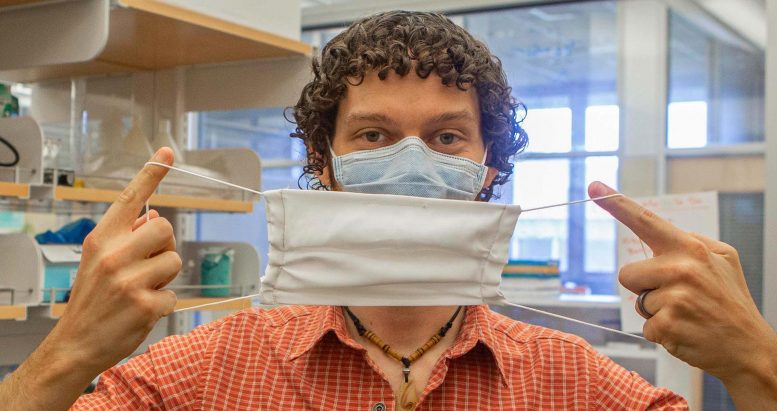
UC postdoctoral researcher Adam Parlin holds up a silk face mask. A UC study found that silk masks might work better at repelling COVID-19 than cotton or synthetic masks. Credit: Joseph Fuqua II/UC Creative
Biology study finds silk offers more protection than cotton or synthetics.
With personal protective equipment still in short supply, researchers at the University of Cincinnati examined what common household fabrics might work best as a face covering.
Next to a single-use N95 respirator or surgical mask, UC found the best alternative could be made by a hungry little caterpillar. Silk face masks are comfortable, breathable, and repel moisture, which is a desirable trait in fighting an airborne virus.
Perhaps best of all, silk contains natural antimicrobial, antibacterial and antiviral properties that could help ward off the virus, said Patrick Guerra, assistant professor of biology in UC’s College of Arts and Sciences.
Studies have shown that copper, in particular, can kill bacteria and viruses on contact. And that’s where the little caterpillars have their own superpower, Guerra said.
“Copper is the big craze now. Silk has copper in it. Domesticated silk moths eat mulberry leaves. They incorporate copper from their diet into the silk,” Guerra said.
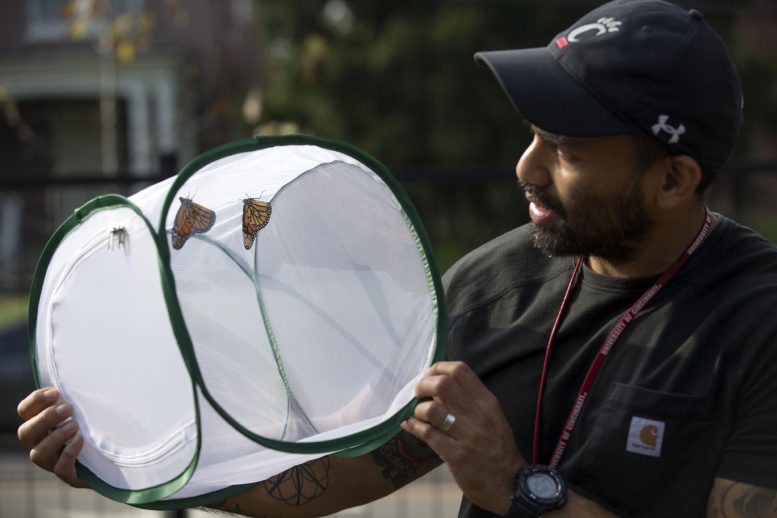
UC assistant professor Patrick Guerra’s work with silk moths inspired his research into the best masks to address the COVID-19 pandemic. Credit: Joseph Fuqua II/UC Creative
Many health care providers wear a surgical mask in combination with an N95 respirator. The outer covering helps prolong the life of the N95 respirator by keeping it clean. Guerra, whose wife, Evelyn, is a medical doctor, said silk might be an especially good choice for this outer cover as they perform similarly to surgical masks that are in short supply.
“Cotton traps moisture like a sponge. But silk is breathable. It’s thinner than cotton and dries really fast,” Guerra said.
With COVID-19 surging in parts of the United States, face masks have become a focal point of prevention.
We’re trying to address this critical problem. Health care workers still don’t have enough personal protective equipment, namely N95 respirators or basic surgical masks.
— Patrick Guerra, UC biologist
In the UC biology lab, researchers tested cotton and polyester fabric along with multiple types of silk to see how effective a barrier each is for repelling water, representing respiratory droplets containing the virus. They found that silk worked far better as a moisture barrier than either polyester or cotton, both of which absorb water droplets quickly.
UC’s study concluded that silk performs similarly to surgical masks when used in conjunction with respirators but has the added advantages of being washable and repelling water, which would translate to helping to keep a person safer from the airborne virus.
“The ongoing hypothesis is that coronavirus is transmitted through respiratory droplets,” Guerra said. “If you wore layers of silk, it would prevent the droplets from penetrating and from being absorbed. Recent work by other researchers also found that increasing layers of silk improves filtration efficiency. This means that silk material can repel and filter droplets. And this function improves with the number of layers.”
The study was published this month in the journal Plos One.
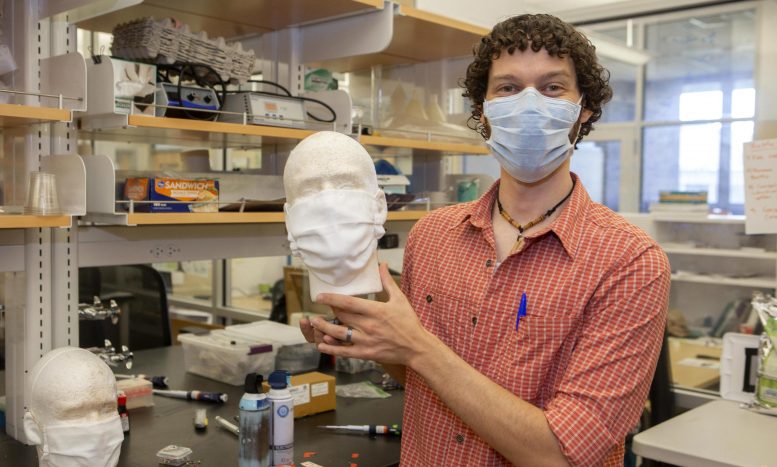
Postdoctoral researcher Adam Parlin holds up a styrofoam head draped with a silk mask. UC biologists examined how well face masks made from different materials repelled water or aerosolized droplets. Silk impeded the penetration and absorption of liquid and aerosolized droplets better than cotton or synthetic fabrics. Credit: Joseph Fuqua II/UC Creative + Brand
“We’re trying to address this critical problem. Health care workers still don’t have enough personal protective equipment, namely N95 respirators or basic surgical masks,” Guerra said.
Previously, Guerra studied the neurobiology behind the incredible multigenerational migration of monarch butterflies across North America. Now UC students raise silk moths (Bombyx mori) in Guerra’s biology lab.
UC postdoctoral researcher Adam Parlin wrote an undergraduate instruction manual for care and feeding of the moths he titled, “How to Train Your Bombyx,” a riff on the DreamWorks’ animated dragon movies. The cover features a picture of the adult moth. With its big head, enormous eyes and fanned wings, the silk moth indeed resembles a night fury from the films.
“These little guys are entertaining,” he said.
A time-lapse video shows a silkworm building a cocoon in 72 hours. Credit: Adam Parlin
As part of his research, Parlin studied how the caterpillars make their protective silk cocoons. When they reach a point in their life cycle, the caterpillars become manic workaholics. For 72 straight hours they spin and spin their silk to create a luxurious, breathable fortress where they can pupate safely into a fuzzy white moth.
Researchers created cardboard arenas with a wooden dowel in the center upon which the caterpillars can spin their silk cocoons. The caterpillars work methodically and nonstop, initially spinning silk from the top of the dowel at an angle to the cardboard like a tent. Once the tent is finished, they work in earnest on building their grape-sized cocoon in a corner of it.
“If the cocoon gets damaged, they just build a second layer around it,” Parlin said.
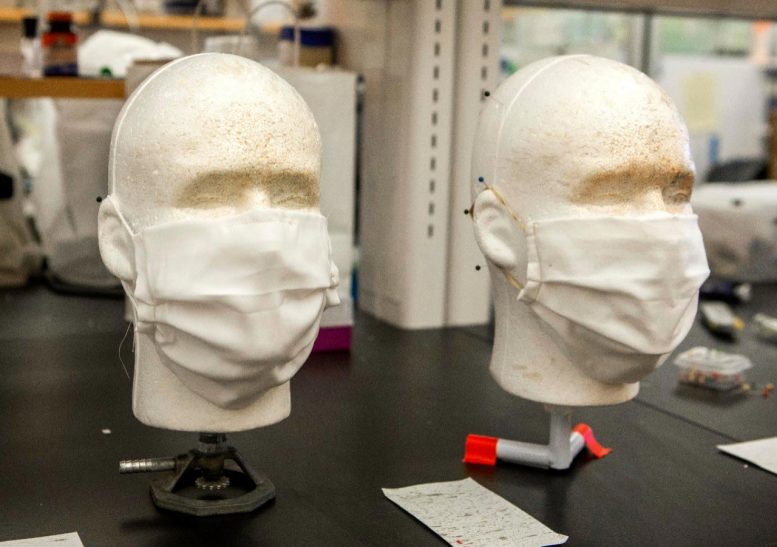
UC found that silk repelled moisture better than other common fabrics used in face masks. Credit: Joseph Fuqua II/UC Creative + Brand
The moisture-trapping cocoon provides an ideal microclimate to keep the caterpillars happy despite any sudden changes in the weather.
“The silk cocoons prevent moisture from getting in and keeps the animal from desiccation or drying out,” Guerra said.
Now Guerra is investigating how long the virus survives on silk and other materials.
As shortages of personal protective equipment continue to plague health care providers, Guerra said homemade masks will continue to play an important role in keeping people safe from COVID-19.
“Silk has been with us for a while — since the days of the Silk Road,” Guerra said. “It’s not a new fabric, yet now we’re finding all these new uses for it.”
Reference: “A laboratory-based study examining the properties of silk fabric to evaluate its potential as a protective barrier for personal protective equipment and as a functional material for face coverings during the COVID-19 pandemic” by Adam F. Parlin, Samuel M. Stratton, Theresa M. Culley and Patrick A. Guerra, 18 September 2020, PLOS ONE.
DOI: 10.1371/journal.pone.0239531




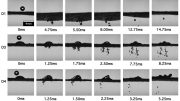
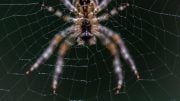

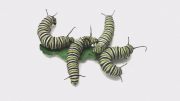
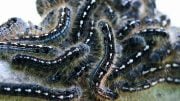
Are they available? Where do you get them? How are they made? Just cut up an old silk scarf? Come on, thanks for leaving us hanging!
qehomelinensDOTcom then search for reusable silk mask
This appears to be a very good quality silk face mask.
Long ago (late 1980s or early 1990s) I read an article that reported on people in India who gathered their water from dirty mud puddles and community water holes (in areas where water is scarce). Most filtered the water through silk scarves into buckets. Scientists studied the situation and determined that filtering through silk significantly reduced the bacteria in the water; maybe it said viruses, also, but I don’t remember exactly. Cotton scarves did not. Viruses are (if memory serves) much smaller than bacteria, but I’m not so surprised about the findings reported in this article.
As a mountain backpacker, I find silk to be, by far, the BEST material to hike in. A see-through thin shirt and “long-john” pants (yea, wear shorts also) is much warmer than cotton when dry, and especially when wet. It cuts the wind better. It dries much faster, so when I hike up a mountain at 40°F with a 50lb pack, in the lee of the wind, and sweat, then reach the windy summit, my silk shirt dries almost instantly; faster than synthetic (nylon/polyester/polypropylene), and it is less bulky and lighter in weight than any other material (my shirt or pants ball up to fit in the palm of my hand). Black in the winter sun keeps me as warm as a thick wool shirt, sometimes warmer, as the heat is transferred directly to my skin.
Yet in the summer heat, a white long-sleeve silk shirt protects me from the intense sun at high altitudes without the need for greasy chemicals on my skin that also add weight to my pack, and is cooler than cotton (!!! yes, warmer in the winter, cooler in the summer – nature is an impressive engineer !!!).
BUT I heard that to collect the silk, the silk nests with the little worms inside are dropped into boiling water and you can hear the worms scream in pain as they die. If someone eats the “soup” (maybe even fed to livestock), then I guess it wouldn’t be much different than what nature creates anyway everyday. Someone needs to figure out how to make silk in the lab. I think of it as the ultimate fiber.
Oh yea, I almost forgot:
I can hike and sweat for a week in the summer heat while wearing my silk shirt, and it still doesn’t stink (I guess it’s the anti-microbial action of the silk fibers). I can wash it in a cupful of water. Polypro users know how hard it is to wash the stink out of their clothes!
Just so you know, the butterflies in the containers are not Silkworm Moths, they are Monarch Butterflies. It would help with the accuracy of your article if a huge mistake like this is corrected.
My lab also studies monarch butterflies and their migration. That information was buried in the article, so I can see the discrepancy between the contents of the photo and the caption accompanying it.
I guess I need more photos of me with silk moths so old photos of me with monarchs aren’t used.
Sorry about that.
Apparently there is ethical silk – look up Ahimsa silk – a way of making silk without killing the worm! Found it in google search. I also thought some animal had been genetically altered to produce silk as well – but that might bother some people.
They KILL the silk worms. For any Vegans who do not know. 6,600 silk worms die for 1Kg or 2.2 lbs of silk.
If the face mask work the best why is he wearing a different type, than what he says?
Good morning USA!
THE CRAP $$$$ ” MASKS” THE CHINESE ARE FLOODING THE MARKER PLACE WITH ARE JUST :” OVERSIZED LEAKY BAND-AIDS!”
RESPIRATORS TO STOP VIRUSES FIT TIGHT & THE FILTER CARTRIDGES SHOULD BE CLEANED WITH UVC BEFORE DUMPING THEM FULL OF LIVE COVID – SARRS V3!
OR
THEY CAN BE REUSED AFTER : UVC BOXED!
I’D ADMIT A SILK LAYER WOUL KEEP THEM DRIER BUT:
WHAT NEXT? EVERYBODY IN NASA SUITS?
OR
COMPELLING THE DAMN CHINESE TO PRODUCE A VACCINE, TREATMENT & CURE INSTEAD OF RACKING IN $$$$$ & £¢€¥!
I thought the article and research deserves good merit. So many opinions but lack of praise. I say thank you. I am sure if you are vegan there are other more suitable options. And let’s not get into China.